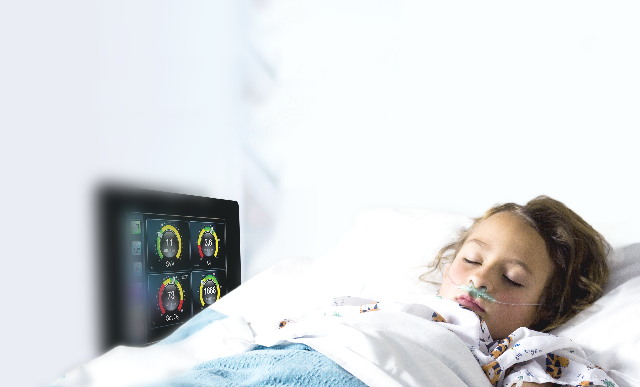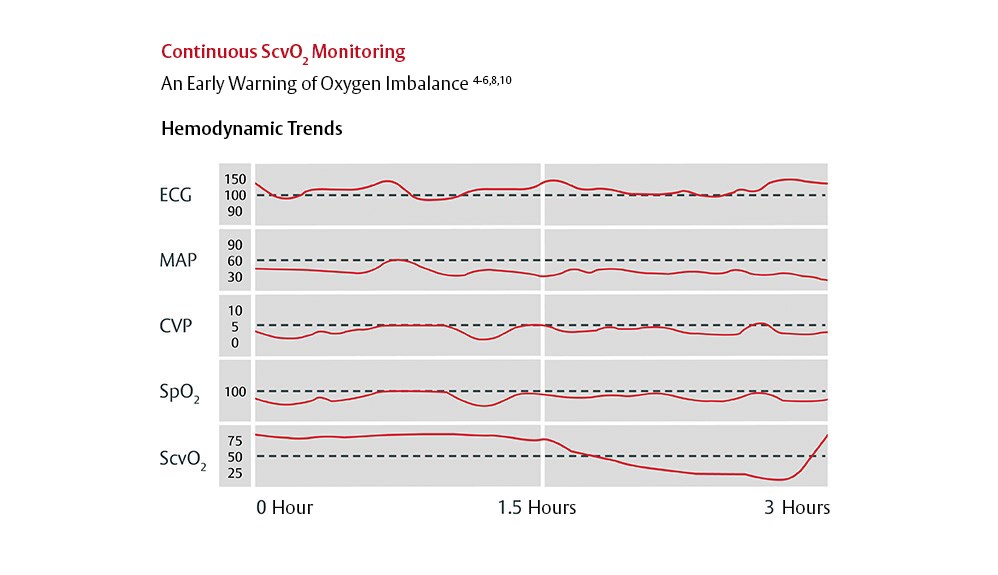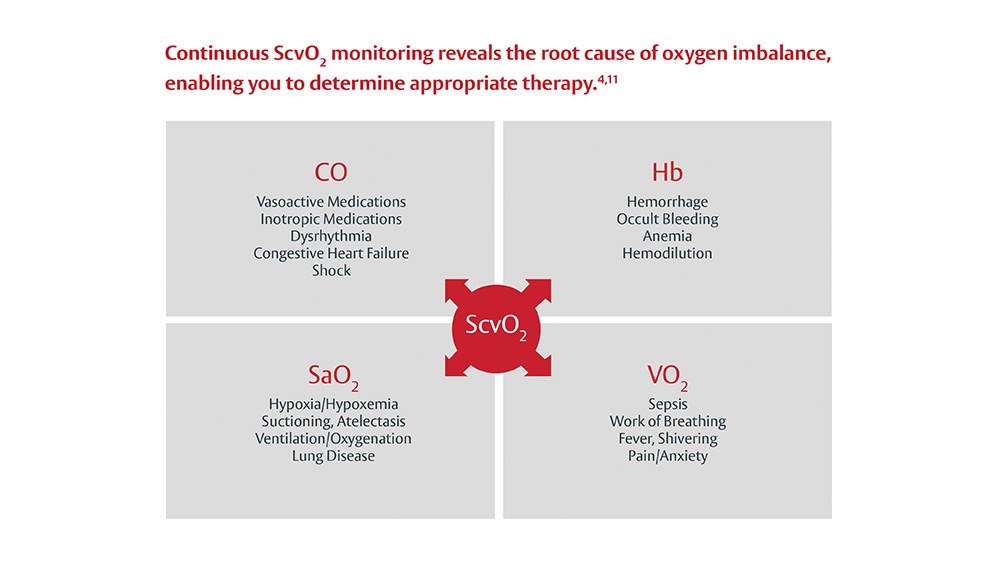联系销售代表
参考文献:
- Spenceley, N., et al. Continuous central venous saturations during pericardial tamponade case report. Pediatr Crit Care Med 2007, Vol. 8, No. 3,p18.2.153.
- Krahn, G., et al. Early clinical evaluation of the Edwards PediaSat™ oximetry catheter in pediatric patients. Pediatr Crit Care Med 2007, Vol. 8, No. 3,p18.2.152.
- Spenceley, N., et al. Continuous central venous saturation monitoring in pediatrics: a case report. Pediatr Crit Care Med 2008, Vol. 9, No. 2, p e13-e16.
- Reinhart K, et al. Continuous central venous and pulmonary artery oxygen saturation monitoring in the critically ill. Intensive Care Med. 2004;30(8):1572-8.
- Rivers EP, et al. Central venous oxygen saturation monitoring in the critically ill patient. Curr Opin Crit Care. 2001;7(3):204-11.
- Ingelmo P, et al. Importance of monitoring in high-risk surgical patients. Minerva Anestesiol. 2002;68(4):226-30.
- Pearse, R, et al. Changes in central venous saturation after major surgery, and association with outcome. Crit Care 2005;9(6):R694-91.
- Scalea, TM, et al. Central venous oxygen saturation: a useful clinical tool in trauma patients. J Trauma 1990;30(12):1539-43.
- Tweddell JS, et al. Patients at risk for low systemic oxygen delivery after the Norwood procedure. Ann Thorac Surg. 2000;69(6):1893-9.
- Ander, DS, et al. Undetected cardiogenic shock in patients with congestive heart failure presenting to the emergency department. Am J Cardiol 1998;82(7):888-91.
- Zaja J. Venous oximetry. Signa Vitae 2007;2(1):6-10.
- Tweddell, JS, et al. Mixed venous oxygen saturation monitoring after stage 1 palliation for hypoplastic left heart syndrome. Ann Thorac Surg 2007;84:1301-1311.
- Oliveira, CF, et al. An outcomes comparison of ACCM/PALS guidelines for pediatric septic shock with and without central venous oxygen saturation monitoring. Pediatr Crit Care Med 2007, Vol. 8,No. 3 (Suppl.).
- Tweddell JS, et al. Postoperative management in patients with complex congenital heart disease. Semin Thorac Cardiovasc Surg Pediatr Card Surg Annu. 2002;5:187-205.
- Tweddell, JS, et al. Improved survival of patients undergoing palliation of hypoplastic left heart syndrome: lessons learned from 115 consecutive patients. Circulation 2002;106(12 Suppl 1):I82-9.
- Hoffman GM, et al. Venous saturation and the anaerobic threshold in neonates after the Norwood procedure for hypoplastic left heart syndrome. Ann Thorac Surg. 2000;70(5): 1515-21.
- Mahajan A, et al. An experimental and clinical evaluation of a novel central venous catheter with integrated oximetry for pediatric patients undergoing cardiac surgery. Pediatric Central Venous Oximetry. Anest Anal. 2007;Vol.105, No. 6, 1598.
- Sanders CL. Making clinical decisions using SvO2 in PICU patients. Dimens Crit Care Nurs. 1997;16(5):257-64.
- Chakravarti, S.B., et al. Multisite Near-Infrared Spectroscopy Predicts Elevated Blood Lactate Level in Children After Cardiac Surgery. Journal of Cardiothoracic and Vascular Anesthesia. 2009.
- Lemson et al. Advanced hemodynamic monitoring in critically ill patients. Pediatrics. 2011.
- Ranucci et al. Central venous oxygen saturation and blood lactate levels during cardiopulmonary bypass are associated with outcome after pediatric cardiac surgery. Critical Care 2010.
- Vallet B, et al. Venous oxygen saturation as a physiologic transfusion trigger. Crit Care. 2010;14:213.
- Clinical PreSep PediaSat Clinical Evaluation Report.
Please update your browser
Please update to a current version of your preferred browser, this site will perform effectively on the following:
Unable to update your browser?If you are on a computer, that is maintained by an admin and you cannot install a new browser, ask your admin about it. If you can't change your browser because of compatibility issues, think about installing a second browser for browsing and keep this old one for compatibility









